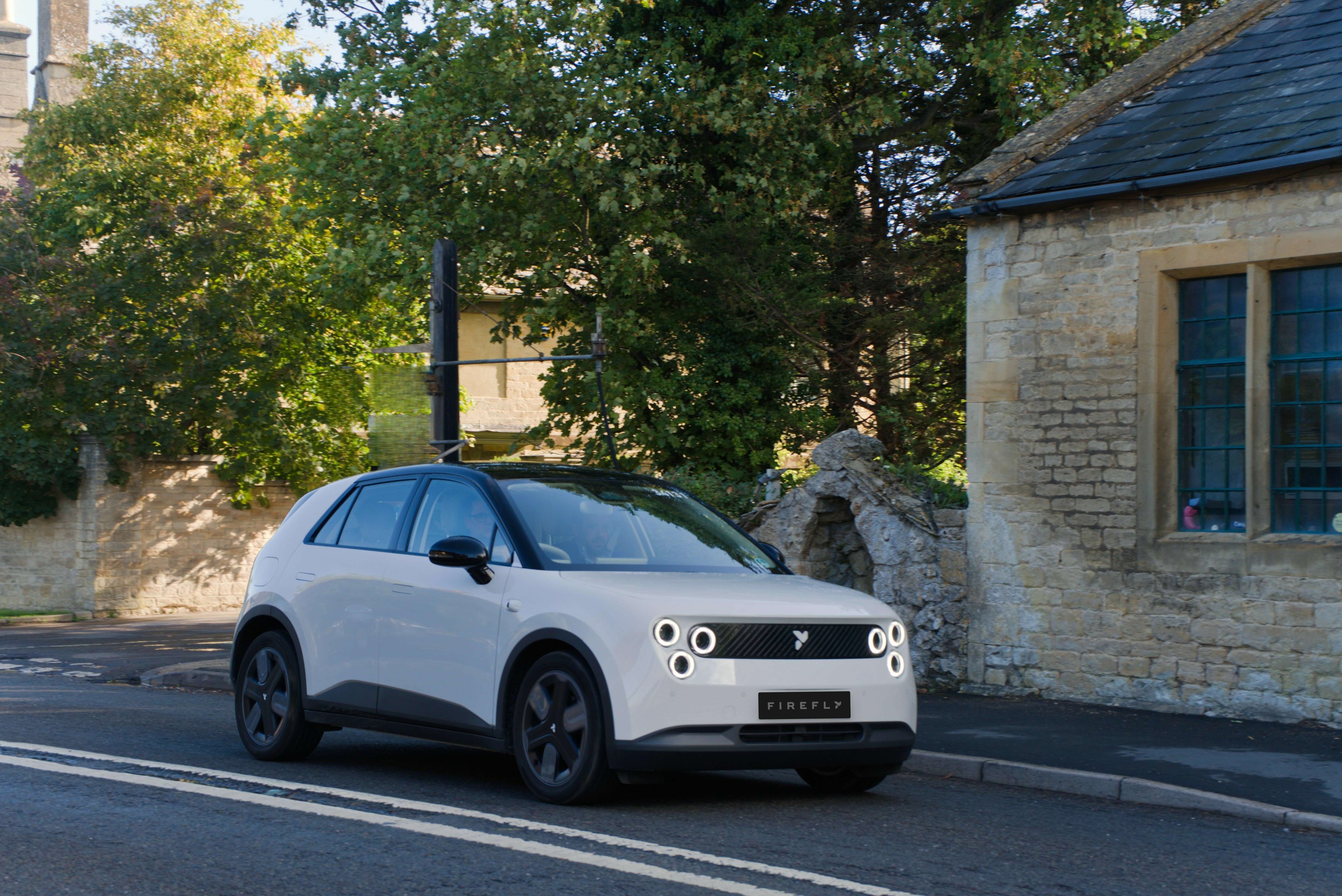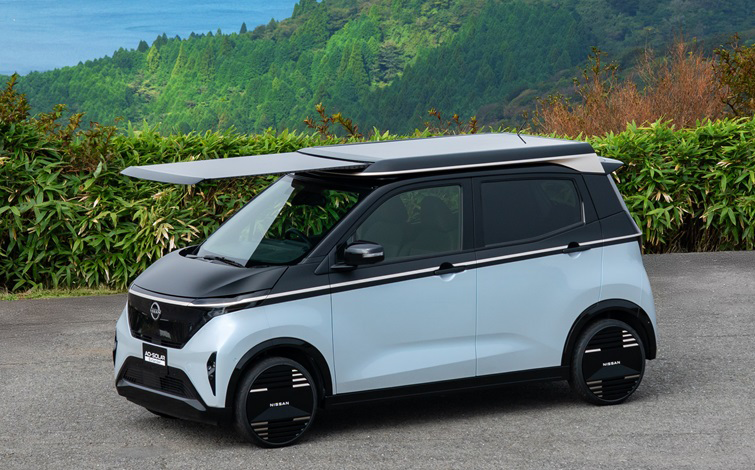
Pedro Lima
My interest in electric transportation is mostly political. I’m tired of coups and wars for oil. My expectation is that the adoption of electric transportation will be a factor for peace and democracy all over the world.
The BYD e6 is an electric car aimed for taxi services that has been in production since 2009. It always had cobalt-free LFP (LiFePO4) batteries.
Unfortunately, even with some upgrades since its debut, the BYD e6 always remained a sluggish, heavy and inefficient vehicle. However, now with a facelift it becomes lighter with more range and higher efficiency.
The BYD e6 currently has a 82 kWh battery that weights 700 kg (117 Wh/kg), while the BYD Han EV has a 77 kWh battery that weighs roughly 550 kg (140 Wh/kg).
Guoxuan is an important battery cell maker in China specialized in cobalt-free LFP (LiFePO4) battery cells that also makes long-lasting LTO cells. It produces cells in both cylindrical and prismatic forms.
This company currently supplies cobalt-free LFP battery cells to make the extremely affordable electric car Wuling Hong Guang MINI EV.
Guoxuan prismatic battery cells
Guoxuan cylindrical battery cells
Currently its most energy dense commercial LFP battery cells are in the cylindrical form and already surpass 187 Wh/kg, but Guoxuan expects to reach 210 Wh/kg during this year.
SGMW (SAIC-GM-Wuling) is a joint-venture between GM and SAIC that is producing a truly affordable electric car perfect for the city environment, the Wuling Hong Guang MINI EV.
July was the first full sales month for the electric city car Wuling Hong Guang MINI EV and it was impressive with 7.348 units delivered. Currently more than 15.000 units were already delivered.
Who would’ve known that good availability and decent price is important for a small electric car’s success?!
Volkswagen’s first electric compact SUV is now being built in Zwickau, Saxony, Germany.
First let’s see the press release, then I’ll make some considerations.
Volkswagen’s electric offensive continues to gather speed: Series production of the brand’s first all-electric SUV, the ID.4, gets underway in Zwickau. The world premiere of the ID.4 follows at the end of September. Volkswagen is thus underscoring its ambition to become the world market leader in e-mobility. To this end, the Group is investing some €33 billion in the period to 2024, €11 billion of which have been earmarked for the Volkswagen brand. The brand expects to produce 1.5 million electric cars in 2025.
Months ago SVOLT mentioned that it will start producing NCMA and LNMO cells for CTP (cell-to-pack) battery packs next year and it’ll supply an European carmaker that we now know to be PSA.
What we still don’t know is what kind of battery cells will PSA get from SVOLT. Will they be NCMA, LNMO or both?
During the next years, both chemistries will probably play an important role in the development of electric cars.
Leapmotor started the deliveries of its electric sports car the S01 roughly a year ago, but recently this Chinese startup launched a more affordable electric car, the T03 that could be perfect for the European car market.
With a NEDC range of 403 km (250 miles) - that translates to a WLTP range around 300 km (186 miles) - this electric car is eligible for the full Chinese government subsidy of 22.500 yuan (2.742 euros).
After terminating the battery rental for new units in the UK and Spain, now Renault is also selling the ZOE in Portugal and France only with batteries included.
Important markets, such as Germany and Italy, still offer the option of renting the battery, but it’s only a matter of time before it runs out.
These are now the starting prices in Spain.
Life R110 (ZE 40 battery): 28.485 euros Intens R110 (ZE 50 battery): 30.523 euros Intens R135 (ZE 50 battery): 30.966 euros Zen R135 (ZE 50 battery): 32.162 euros These are now the starting prices in Portugal.
The 2020 Chengdu Auto Show started yesterday (July 24) and a lot of Chinese automakers are using it to unveil new or upgraded electric cars. One of these automakers is ORA.
ORA is the affordable brand of the giant Chinese automaker GWM (Great Wall Motors) that also owns the battery cell maker SVOLT.
ORA R1 (Black Cat)
The ORA R1 that looks like a mixture between a Honda e (front) and a Smart ForFour (back) now gets a 37 kWh battery, enough to surpass the mark of 400 km range in NEDC, which makes it eligible to get the full government subsidy.
Now that BMW finally unveiled its new electric car, we have more details about its powertrain that includes a NCM 811 battery made with 188 prismatic cells from CATL.
But first, let’s see some important parts of the press release.
New BMW iX3 will be the brand’s first model to also be produced for export at the Shenyang manufacturing facility in China. Market launch will begin in China later in 2020. Strategic “Power of Choice” approach covers broad spread of customer requirements and statutory regulations around the world: BMW X3 is the first model to be available with a petrol or diesel engine, plug-in hybrid drive system or all-electric drive system. New BMW iX3 blazes a trail for fifth-generation BMW eDrive technology. Major progress made in terms of power density, operating range, weight, installation space requirement and flexibility. Power density of the electric drive system increased by 30 per cent over the BMW Group’s existing fully electric vehicles; gravimetric energy density of the high-voltage battery at cell level up by 20 per cent. Latest versions of the electric motor, power electronics, charging technology and high-voltage battery (all developed in-house) will also be deployed in the BMW iNEXT and BMW i4 from 2021. Efficiency boosted significantly compared with the BMW i3 by highly integrated drive system technology. Electric motor, power electronics and transmission arranged in a central housing for the first time. Fifth-generation BMW eDrive high-voltage battery with the latest battery cell technology and gross energy content of 80 kWh enables operating range of up to 460 kilometres [285 miles] in the statutory new WLTP test cycle (up to 520 kilometres [323 miles] in the NEDC test cycle). BMW Group monitors compliance with environmental and social standards as part of its procurement process for the lithium and cobalt used in battery cells. Newly designed fifth-generation BMW eDrive electric motor produces maximum output of 210 kW/286 hp and peak torque of 400 Nm (295 lb-ft). Acceleration from 0 to 100 km/h [62 mph] in 6.8 seconds (for purposes of comparison – BMW X3 30i: 6.4 seconds), top speed (electronically limited): 180 km/h [112 mph]. The design principle of a current-excited synchronous motor enables optimised power development and allows engineers to avoid the use of rare earths.
While ago I wrote that the comeback of LFP (LiFePO4) batteries would happen and it would be thanks to the adoption of a new high-voltage form of LFP that incorporates manganese (LFMP).
It seems that I was right about the first part and wrong about the second. Cobalt-free LFP batteries are now gaining traction, but it isn’t thanks to LFMP…
It’s the CTP (cell-to-pack) technology the main responsible for the substantial energy density increase of cobalt-free LFP batteries that made their strong comeback inevitable.
Panasonic is one of world’s biggest battery cell makers, but as strange as it may seem, the company is in a fragile position.
Supplying very energy-dense cylindrical NCA battery cells to Tesla has been the focus so far, however the company can’t be sustainable if it depends too much on a single customer, especially if this customer uses a type of cells that others don’t and even intents to produce its own cells someday.
Launched last year in China the Weltmeister EX5 is currently listed with a starting price of 139.800 yuan (17.561 euros) after subsidies. This is a very appealing electric car sized between the Kia e-Niro and the Tesla Model Y.
Let’s see some of its specs:
Wheelbase: 2.703 mm Length: 4.585 mm Width: 1.835 mm Height: 1.672 mm Motor: 160 kW and 315 Nm of torque Acceleration: 0-100 km/h in 8,3 seconds On-board charger: 6,6 kW DC fast charging: 30 to 80 % in 30 minutes at 120 kW chargers Battery capacity: 69 kWh with lifetime warranty Battery weight: 432 kg Battery energy density: 160 Wh/kg Range (NEDC): 520 km (323 miles) Considering that range in WLTP is roughly 3/4 of NEDC, in a more realistic test cycle the range would be around 390 km (242 miles). Not bad at all considering the price.








































